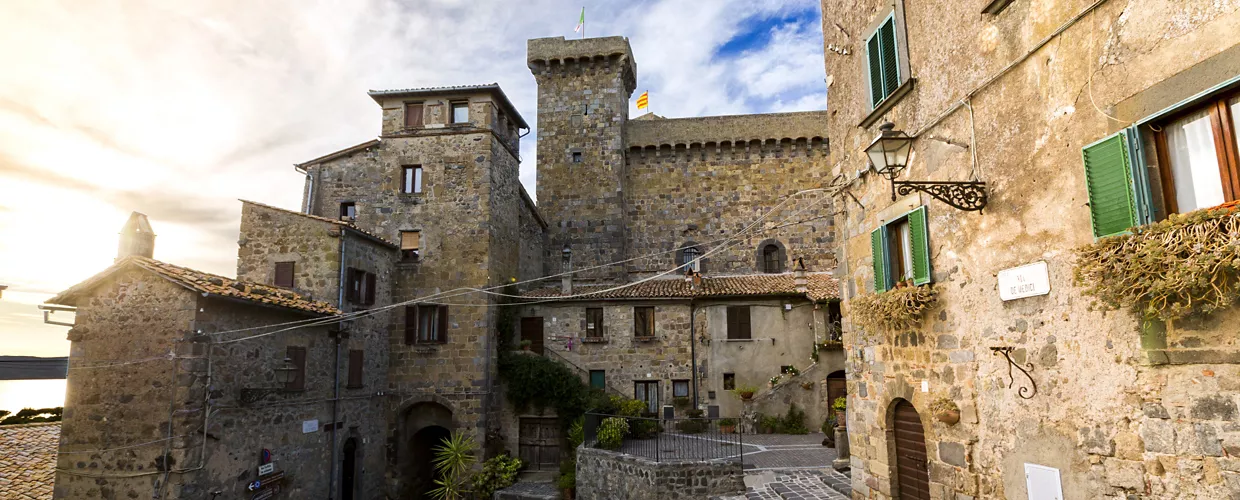

Overview
The vast expanse of water in the Tuscia Viterbese area and its two islands are prime tourist destinations in their own right. Added to them is the small and lively Bolsena itself, with its medieval village wrapped in a basin and the modern part towards the tourist harbour and the restaurants on the promenade. It is no coincidence that Bolsena is an Orange Flag resort certified by the Italian Touring Club for the quality of its environment, its artistic heritage and its capacity for hospitality.
Here, history goes far back in time, even further than the 13th century when the Monaldeschi Castle began to rise: the territorial museum that can be visited in the castle recounts and bears witness to these long events, starting with the prehistoric settlement and the Etruscan and Roman civilisations. Once outside, one stops on the square to enjoy the view, and then heads towards the Renaissance Palazzo del Drago, which used to be the seat of the papal legates, and the thousand-year-old Collegiate Church of St. Christine, with its late 15th-century façade and wide Romanesque nave. In the church, a 13th century fresco on the arch leading to the Grotto of the Saint is the first historical representation of the famous Eucharistic miracle of Bolsena, the origin of the Catholic feast of Corpus Christi. A gate gives access to the room with the tomb of the martyr, portrayed lying on her sarcophagus in a moving 15th-century terracotta statue.
In the Lake, the pair of islands is located closer to the other village ofCapodimonte, along the opposite shore from Bolsena. On the Martana Island it is said that Amalasunta, the daughter of the Ostrogothic king Theodoric, was imprisoned and then murdered in the 5th century; whether true or not, ruins of a castle and an original 9th century church remain. Less ancient is the church on the Island Bisentina: an architecture possibly by Giuliano da Sangallo the Younger, where the captain of the papal army Ranuccio Farnese the Elder has been resting since the mid-15th century. The Bisentina is municipal property, and you can eventually disembark there.
Lago di Bolsena, Provincia di Viterbo, Italia